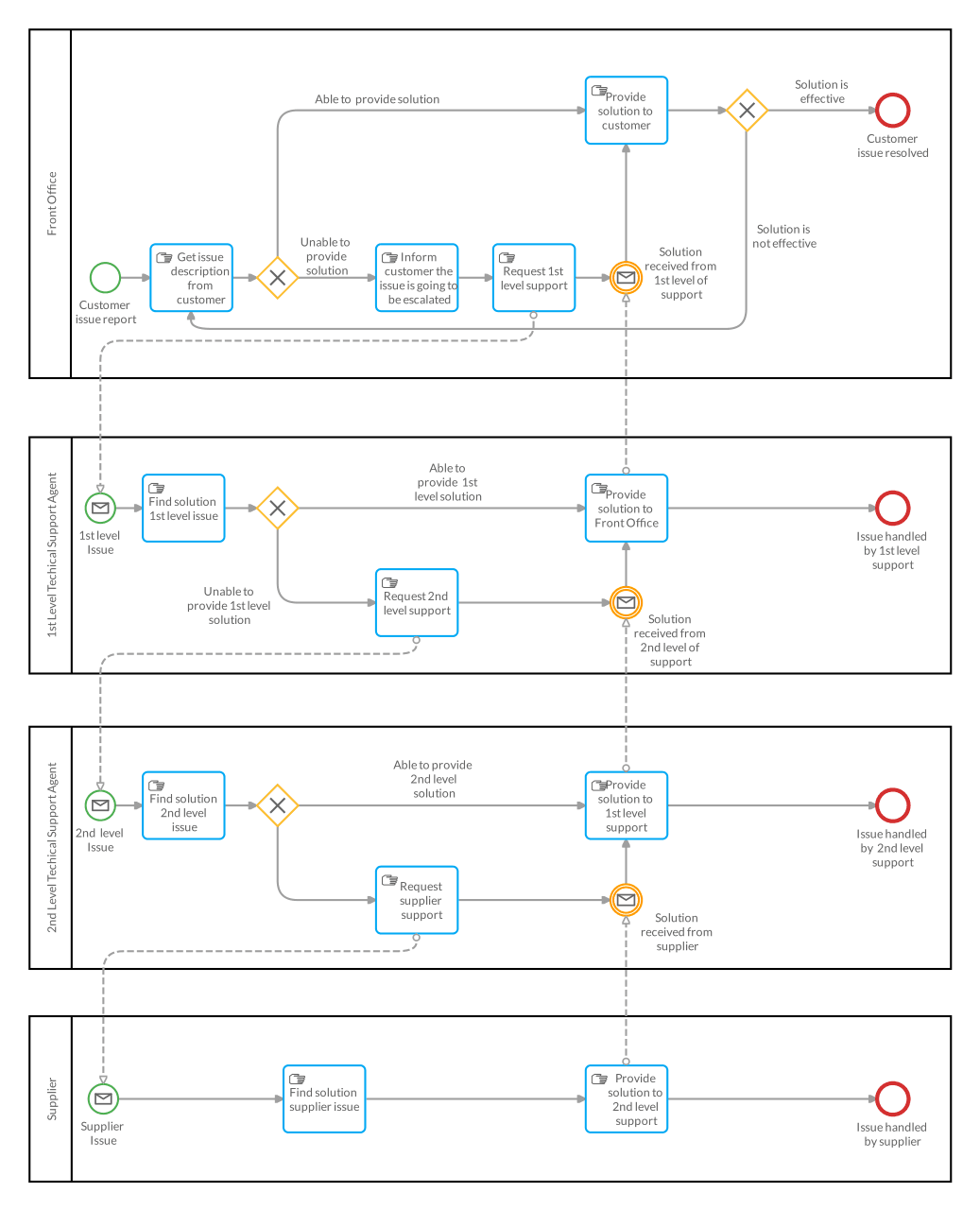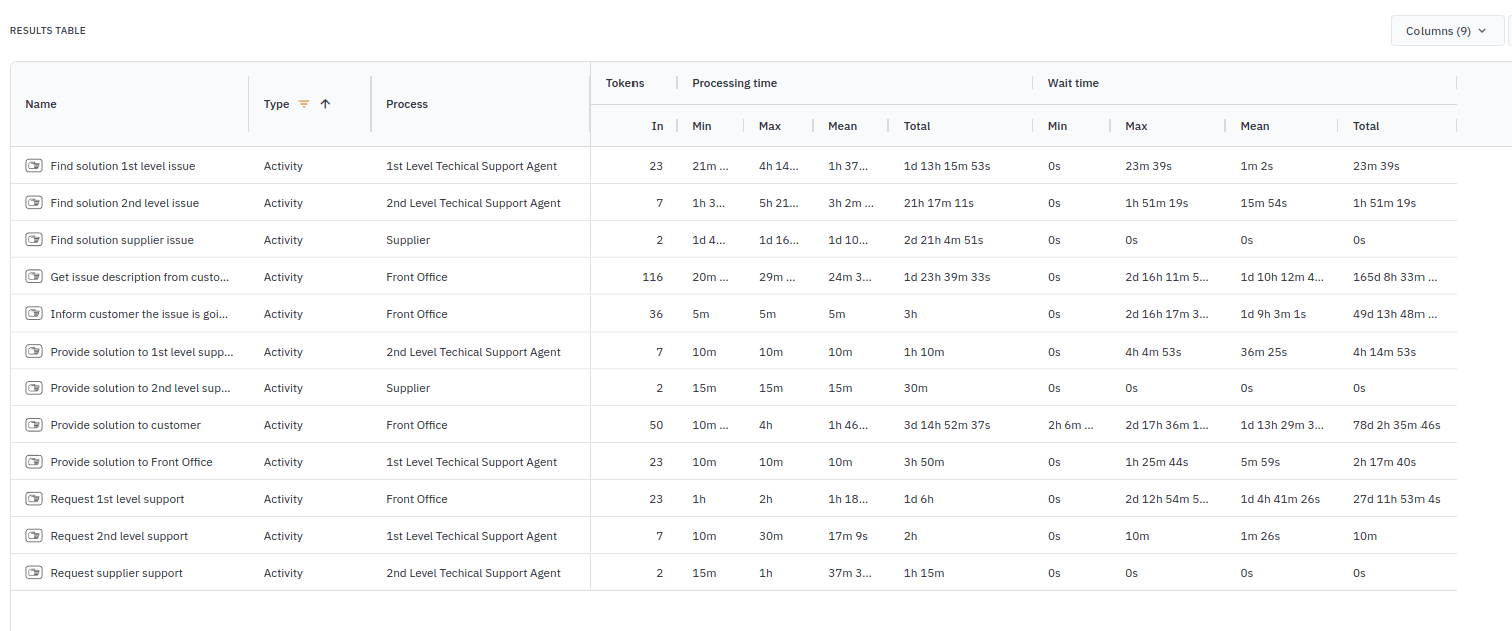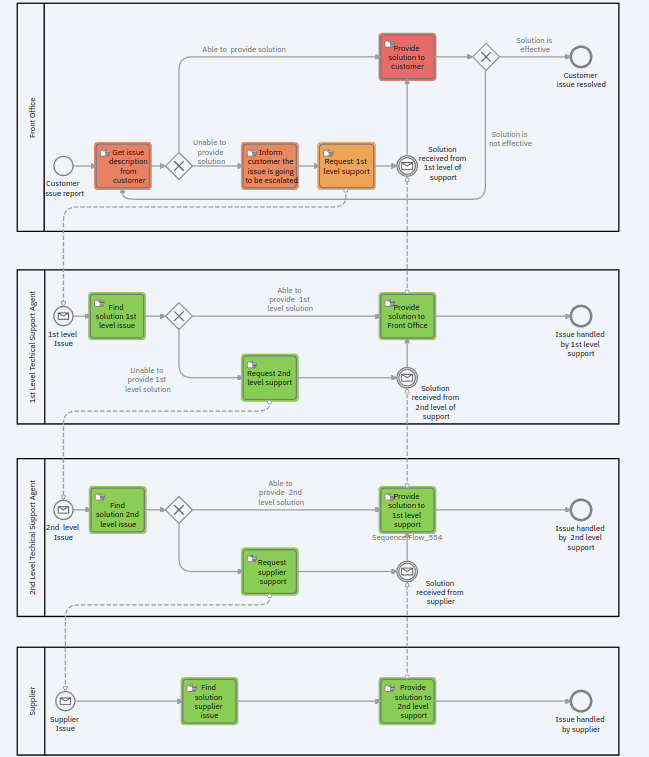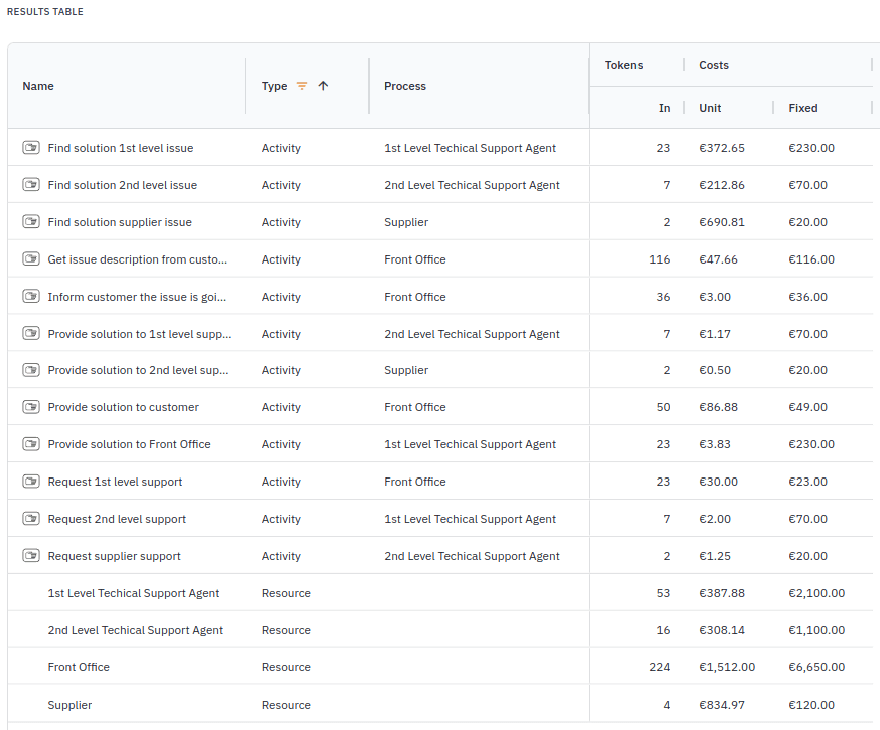A journey in Process Simulation: next steps towards the Digital Twin
Written by Teresa Montrone
18 November 2024 · 8 min read

In our blog post in July this year, we began our journey into Process Simulation. We explored how process simulation can help find deadlocks and enhance your knowledge of the process. We explained how time parameters in a real scenario allow us to understand the average lead time for the overall process. And how they help us to find the tasks that require more time. We also introduced calendars that allow us to define different parameters for different seasonal variations. However, as we anticipated in our previous blog post, these parameters are not enough for the digital twin definition of your process.
Resources are a big part of process simulation and play a role in the definition of the digital twin of your process. We typically want to know if they're enough to handle all the requests or if some activities will have to wait for a resource to become available. Through process simulation, we can uncover this information. Also, costs are important parameters for the definition of the digital twin. Indeed, it’s useful to measure how much the bottlenecks or the resources needed could impact your company’s finances. For this reason, you should include costs required by the activities and the resources.
Both process simulation resources and costs are now available in Cardanit, and we would like to demonstrate how to use them effectively.
Resource Parameters in a real scenario
Let’s consider the “Support Request” template reported also here.

The use case
The process starts with a customer asking for a repair. Your company tries to solve the issue with different levels of support and eventually by involving an external supplier. In this process, different resources play a specific role: in particular, there is at least one customer that submits a repair request. There’s also at least one front office person who receives and forwards the repair request to one or more first-level or second-level technical support agents. If it‘s not enough, you can involve one or more suppliers.
Workflow and simulation settings in the Cardanit BPMN editor
In our editor, you can add the necessary resources required by each task. Indeed, BPMN allows resource creation and assignment. However, for simulation purposes, it’s important to define both the quantity of each resource available and the amount of each resource needed for task completion.
In this process, you can assume that the following people are involved in the process:
- one front office person,
- one first-level technical support agent,
- one second-level technical support agent,
- and one supplier available for all activities,
meaning that each resource is available in a quantity of 1. The resource requirement for each task is known, and it’s assumed that only one resource is needed for the completion of each task. This implies that the quantity of resources required for each task is also 1.
If you know that sometimes resources may not be available throughout all day or during weekends, you can use calendars to set your time parameters. For instance, you could have a calendar for nighttime and weekends where resources are marked as unavailable (resource quantity of 0) and available at all other times (quantity of 1). This can help your process to better reflect real-life situations.
Running a business process simulation
Once you’ve set the parameters, you can simulate a real situation, where requests come in at the rate of one per 30 minutes. This will help determine whether the allocated resource quantities are sufficient to manage all the repair requests effectively. Indeed, some tasks require the same resources. For instance both ‘Find solution 1st level issue’ and ‘Provide solution to Front Office’ requires one first-level technical support agent. But if only one first-level technical support agent is available, these tasks cannot be performed simultaneously, resulting in one task waiting for completion. If you decide to allocate two first-level support agents to the task of finding a solution, the resource quantity should be adjusted to 2. Otherwise, the task will be left incomplete.
To determine whether the allocated resource quantities are sufficient to manage all the repair requests effectively, you should observe the wait time associated with tasks in the simulation results table.

Indeed, the wait time is the time between an activity being allocated and its actual start. If the wait time is big, it means that there are some ‘requests’ that cannot be processed because no resources are available. In the results table, you can see its minimum, maximum, mean and total value. If you move to the heatmap tab and select one of these times, you can also see the selected one compared with its value in the other tasks. For example, if you select the mean wait time, as you could notice, the ‘Provide solution to customer’ has a great wait time. This means that you may need more front office people. If you try to simulate again by changing the quantity of these resources, you can observe that the wait time has decreased.

Soon we'll add some charts for comparison results. This simplifies the improvement process that allows you to understand what is the best configuration of your process.
You can also verify that each task is using the exact number of resources available by observing the resource used. This applies specifically to the minimum, the maximum and the mean value.
If you filter the Type column with Resource only in the results table, you can see how many times each resource has been used (Token in). You can also visualize the actual duration of its total usage (Processing time) or non-usage (Wait time). These values can help you analyze your process more effectively.

Cost Parameters to calculate process expenditure
Adding resources to your process can have a significant impact on your company's finances. For example, if you want to hire extra front-office people to reduce wait times, you have to pay more salaries. But the process impact on your company’s finances doesn’t depend only on paying people - every activity comes with its own costs. How do you figure out how much this process is going to cost you?
Calculating the precise cost of a specific process is crucial. You can utilize cost parameters to achieve this. You can set cost parameters for resources and tasks, and even for different time periods by using calendars. Specifically, you can also set both fixed and unit costs. The unit costs depend on the time, unlike the fixed costs. For instance, the cost of a front-office person depends on their hours worked, but there are also fixed costs like weekend shifts. Similarly the task can require fixed or unit costs, for example the cost for computer purchase or the internet subscription.
Once you’ve added these parameters, you can simulate the costs and see the results.
In the results table, you can filter the fixed and unit costs for both tasks and resources. You can also view their values, so you can have a clear picture of how much your process is going to cost you.

Next steps in Process Simulation towards BPSim standard
In the past year, we began focusing on process simulation. We have taken a big step forward by releasing resource and cost parameters within the BPSim standard. I have explained the advantages of these parameters and what they allow you to do. However, our work on the simulation parameters is still ongoing.
For example, how can you determine which activity will utilize a resource when there are multiple activities to be executed simultaneously? This can be achieved by using priority parameters.
Otherwise, in the ‘Support request’ use case, let’s imagine that your request can be solved without support if a given condition is satisfied. To address this, we’re exploring the use of property parameters.
In the next steps of our journey, we will introduce these parameters. We aim to ensure that our parameterization aligns with the BPSim standard. In our next blog, we will delve deeper into this standard, explaining why we chose to adopt it.
Conclusion - on the right track to Process Improvement
Process Simulation in Cardanit is not yet completed but the development of your digital twin is ever closer.
We understand that process simulation is not a simple topic, unlike BPMN, but it holds significant potential for improving your processes.
We‘re currently working on adding the option to compare results achieved with various simulation parameter configurations. This will help you gain a deeper understanding of how to improve your model.
Furthermore, we aim to offer you the ability to analyze your event logs more effectively through dedicated charts.
But what’s the final step of this?
Imagine if you could automate the steps for process improvement, while considering specific objectives. For instance, determining the optimal configuration of your process model to minimize costs and lead time. We’re also exploring the possibility of optimizing your process. This endeavor could be highly advantageous, and we’re committed to bringing this capability to fruition.
We’re still in the process of developing these new features, but we're determined to reach our final destination to process improvement. Stay tuned for upcoming releases.
Further reading
Blog post: A journey in Process Simulation: from bullet-proofing Automation to a reliable Digital Twin
Cardanit user documentation: Simulation
Teresa Montrone joined ESTECO in 2013 for a PhD in Mathematics in collaboration with the University of Salento. She started belonging to the Numerical Method Group as researcher in optimization, response surface and Design of Experiments. After 8 years she took on the researcher and developer roles in the team developing Cardanit. She’s also been involved in research projects in the field of railways and transportation, applying her expertise in combinatorial methods, optimization and business process simulation. In 2024, Teresa got promoted to Project Manager, coordinating Cardanit development.
Teresa Montrone joined ESTECO in 2013 for a PhD in Mathematics in collaboration with the University of Salento. She started belonging to the Numerical Method Group as researcher in optimization, response surface and Design of Experiments. After 8 years she took on the researcher and developer roles in the team developing Cardanit. She’s also been involved in research projects in the field of railways and transportation, applying her expertise in combinatorial methods, optimization and business process simulation. In 2024, Teresa got promoted to Project Manager, coordinating Cardanit development.
A business is only as efficient as its processes. What are you waiting to improve yours?
